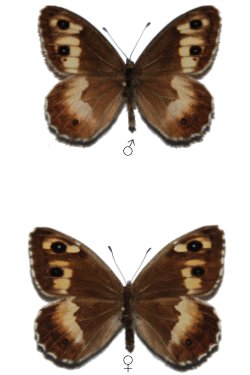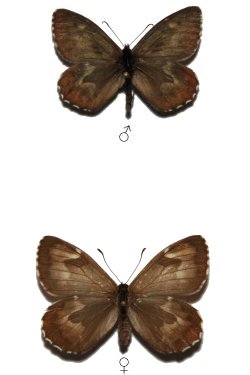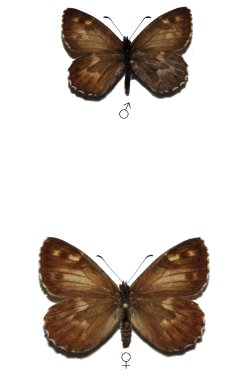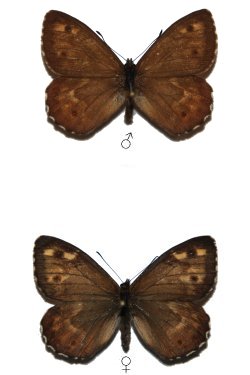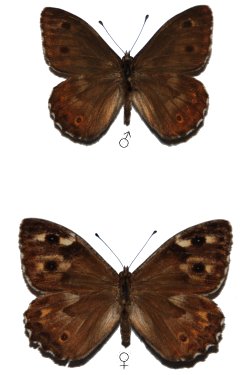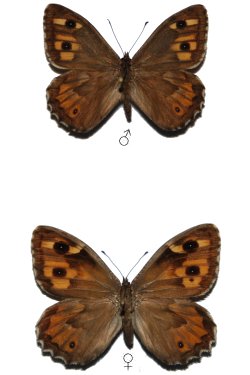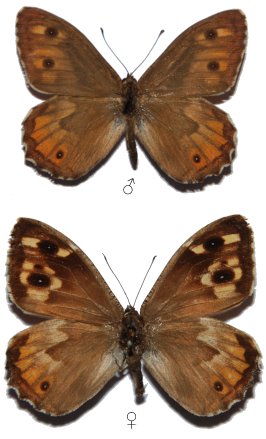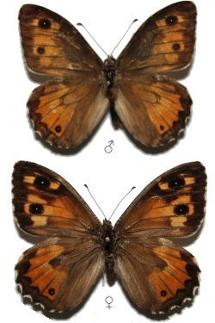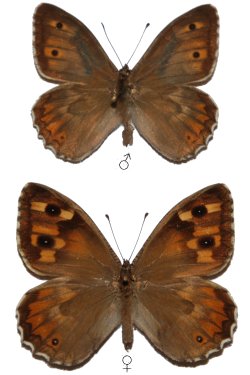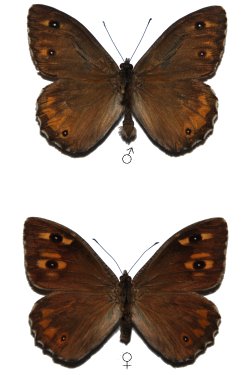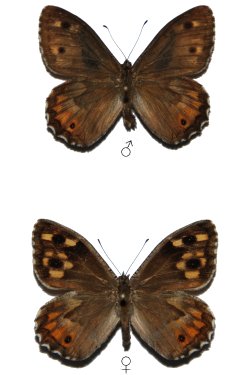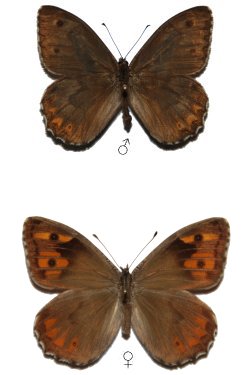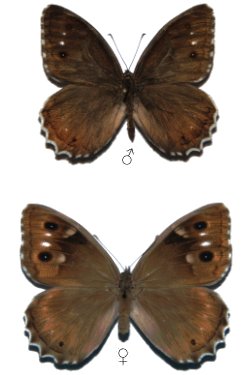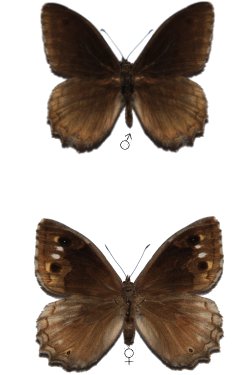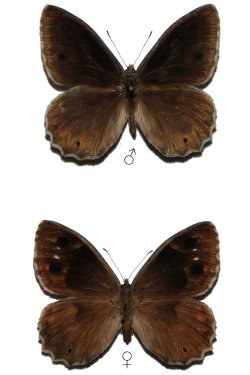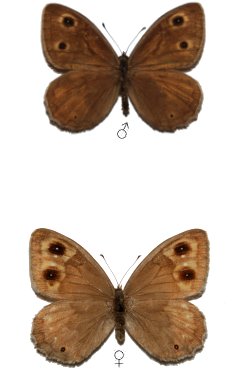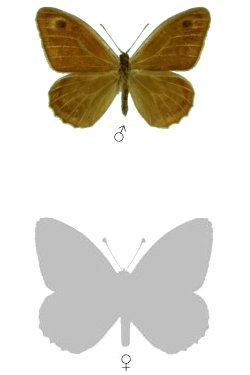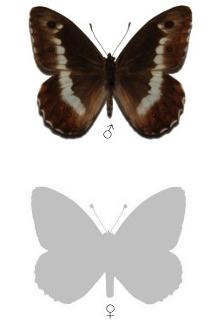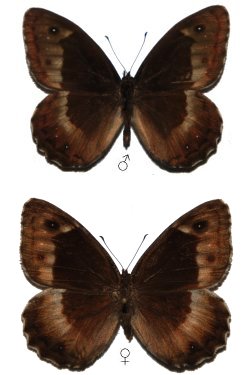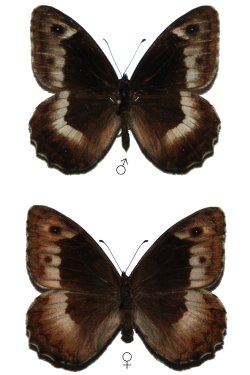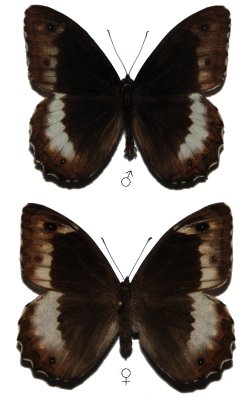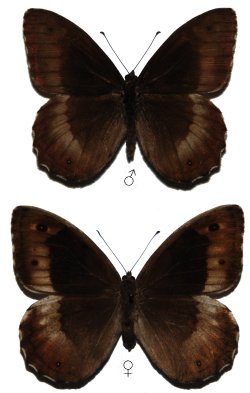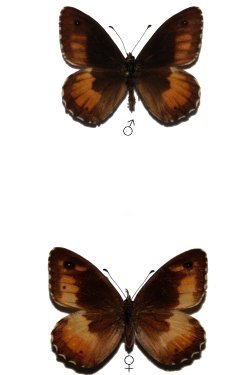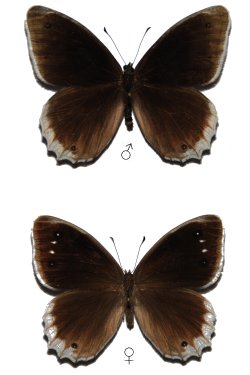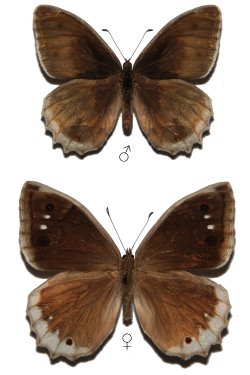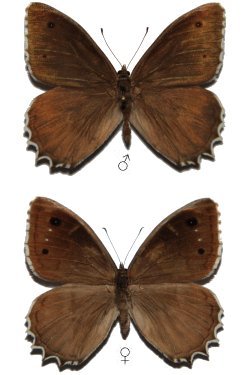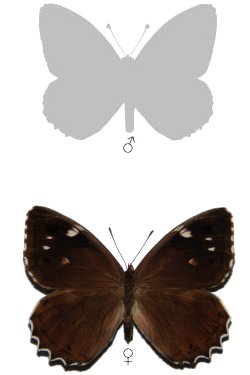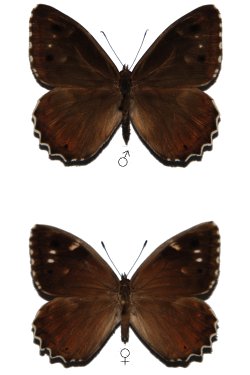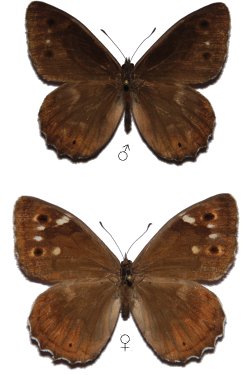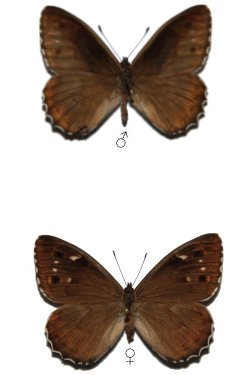Note to the genus Hipparchia: The genus Hipparchia is considered by many to be one of the most complex genera in the European Satyrinae. Various species are ranked as species or subspecies depending on the author and there are no hard and fast rules on whether specimens coming from certain locations belong to a particular species or subspecies. All these inconsistencies bring confusion in the lepidopterists arena when studying these groups and after consulting various papers and books which sometimes even contradict each other, I came to the conclusion that sometimes species and subspecies are created either by authors who had a fast finger to name a species/subspecies for themselves, or by insect suppliers who try to create as many different species/subspecies as possible to augment their sales.
In my opinion, for a group of specimens to be classified as either species or subspecies, the following basic conditions must be met:
To be classified as species:
1. When cross bred with another species of the same genus, either the mating does not produce any siblings or the siblings are sterile (such as in the case of Papilio machaon x Papilio hospiton in Sardinia); and
2. Genitalia, DNA, androconial and wing pattern characteristics are consistently unique to any other known species.
Note: Geographic isolation on its own is not a valid criteria for ranking as certain species are migratory whereas in other cases, strong winds can easily blow specimens from one location to another thus creating localised populations.
To be classified as subspecies:
1. When one subspecies mates with another subspecies, the mating produces fertile siblings which themselves can keep on producing more generations of fertile sub-siblings; and
2. Geographic isolation.
Two of the most complex Hipparchia species are the Hipparchia semele and Hipparchia aristaeus. If one had to review some literature on these two species, it will immediately become evident the level of confusion that exists in these two genera. For example the Hipparchia present on Cyprus is first classified by Parker (1983), Manil (1990) and John (2000) as Hipparchia pellucida cypriensis whereas Kudrna (1986) elevated this Hipparchia to Hipparchia cypriensis even though when one looks at the specimens from Cyprus they look more like Hipparchia semele rather than a Hipparchia pellucida. So the obvious question is - What is the truth? Well, based on my personal criteria mentioned above I cannot classify it as Hipparchia cypriensis just because of geographic isolation. However I didn't have the opportunity yet to try to mate some Hipparchia from Cyprus with another Hipparchia from mainland Europe to see what happens. So to keep the classification simple but meaningful unless both the above criteria for a species are met I always rank a group of specimens from a certain location at a subspecies level.
Even though some or all of you might not agree with some or all of my opinion, I still prefer to have specimens consistently classified on the above criteria rather than having specimens which neither I nor anyone else can ever determine and are kept in my collection as undetermined forever. Whether you decide to follow my criteria or not is just up to you but as long as you are consistent in your conclusions, you can determine certain specimens with relative ease.
